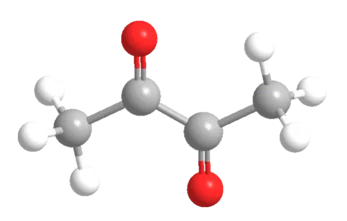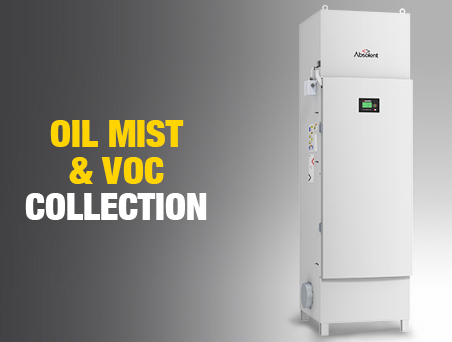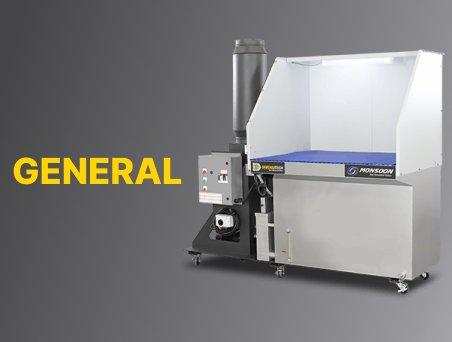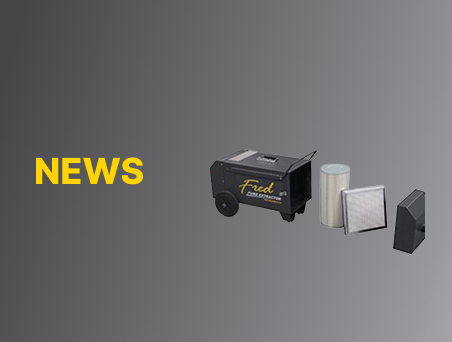Industry Spotlight: Hazards of Food Industry Particulates (Why Popcorn Lung isn't as Delicious as it Sounds)
Industrial food production has become one of the largest manufacturing industries in the US, as of September 2023 employing just over 1.7 million people in the US alone, contributing to a global industry that nets over 3.2 trillion dollars annually, making food production one of the largest industries worldwide.
Employees of this industry have in the last decade, begun to see some long-term health effects related to airborne particulates from chemicals and materials utilized in the industry, a problem that if properly managed, can be almost entirely eradicated. These less than savory health issues can range from mildly inflammatory to life-threatening, depending on the type, classification, and amount of particulate exposure, but regardless of severity, knowing they are preventable leaves us with a sour taste.
Understanding the different hazards in the food industry.
There are four different categories of particulates that workers might be exposed to in the food production industry, detailed in the chart below:
| Category | Defining Characteristics | Examples | Regulations |
| Microscopic Particles | <0.1µm | Dust, allergens, microbial contaminants | Strict monitoring |
| Fine Particles | 0.1µm – 2.5µm | Fine dust, small debris | Monitoring/control through ventilation |
| Coarse Particles | 2.5µm – 10µm | Larger debris, visible contaminants | Quality control, visual inspections |
| Large Particles | > 10µm | Visible debris, foreign objects | Quality control, visual inspections |
The food production industry utilizes materials and processes that can result in particulates that fall into all four of these categories, and depending on the composition of the particulates, the risks to employee health can vary.
Employees that work as bakers, for example, are regularly exposed to powdered flour, sugars, cocoa powder, baking soda, baking powder, and pretty much anything you might find in the “baking goods” aisle at your local grocery store. These are typically rather benign in nature, and while wearing a mask is typically recommended, the risk to employee health is on the less severe end of the spectrum, typically resulting in a condition known as baker’s asthma, but with prolonged exposure over the course of many years can also result in COPD, and chronic bronchitis.
However, in some cases, certain chemicals that are powdered in order to evenly distribute them over food items in the production process can have far worse implications for employee health.
Table of Contents:
Case study: Popcorn lung, the wakeup-call to food industry particulates
In the year 2000, a doctor reported having eight patients, all of whom were former employees of a microwave-popcorn factory, that had developed a debilitating lung condition, known as bronchiolitis obliterans. Four of these patients had become severely ill and were placed on lung-transplant waiting lists. After multiple months of investigation and examination, researchers were able to determine a singular cause of these cases: a compound known as diacetyl, which is a butter-flavoring used in many popcorn salts and in popcorn factories across the nation.
It is because of this connection that the disease is colloquially referred to as popcorn lung. This disease causes the alveoli in a patient’s lungs to become inflamed, which leads to scarring, ultimately making it difficult for the afflicted to get enough oxygen out of the air they breathe in.
Diacetyl isn’t the only chemical that can result in bronchiolitis obliterans; other offending molecules range from acetaldehyde, formaldehyde, ammonia, chlorine, to nitric and nitrous oxide, HCl acid, and mustard gas. While most of these chemicals aren’t found anywhere near food production, thankfully, it is still important to note that these chemical vapors and contaminants can all be easily managed, and the risks associated with exposure to them mitigated with proper air-handling equipment in the workplace.

Health Risks associated with food industry particulates.
Aside from chemicals used as flavorings and in the direct production of food products, employees in the food manufacturing industry are exposed to particulates that fall into a few other categories. Allergens and respirable dust being the most common, these can result in prognoses as mild as occupational asthma to anaphylaxis, depending on an employee’s sensitivity to an allergen (such as nuts, soy, wheat, etc.)
There is also a mild risk of coming in contact with biological contagions, such as viruses, bacteria, and molds that could be present in raw materials or in contaminated environments. These can cause a broad range of risks to employee health, from infections to foodborne illness.
As food production guidelines require manufacturers to maintain a clean operational environment, contaminants such as cleaning products, sanitizers, and disinfectants can also cause health issues, from skin irritation and chemical burns to respiratory issues.
And lastly, as equipment ages and there is significant wear and tear on factory tools, there is an increased risk of metal fragments, shavings, and small particles that can not only cause physical damage but can in some cases cause health issues that one would not directly associate with metal shavings, such as arrythmias, anemia, kidney and liver damage, miscarriages, and even certain cancers.
Current guidelines for ensuring occupational safety in the food industry.
It is common practice in most work environments that personal protective equipment (PPE) (such as N95 masks) is provided for employees that are at risk of exposure to airborne particulates. However, these only mitigate against particulates that fall in the mid-fine particle category and larger, becoming completely ineffective if the contaminant in question is a vapor or a microscopic contaminant, as was the case with diacetyl. The employees that contracted popcorn lung were vigilant about wearing their masks while working, but they weren’t enough to protect them from all the dangers present.
OSHA guidelines for airborne particulates fall into two major categories, one being the particulate dusts that are regulated individually, such as asbestos, coal, silica (see what is happening in California with granite and stone dust), and lead dusts, each of which having its own permissible exposure level (PEL) varying with the specific chemical properties and dangers of the specific particulate; the second being what are known as particulates not otherwise regulated (PNORs). For these particulates, the OSHA PELs are set at 15mg/m3, unless the particulate is under 10µm in size, in which case the PEL is lowered to 5mg/m3, due to the increased likelihood that the smaller particulates will penetrate past the terminal bronchioles, into the gas-exchange region of the lungs, or alveoli.
It is important to note that these PELs are in effect regardless of whether any PPE is utilized by the employees at risk. This means food manufacturers and employers have been turning to other technologies to help meet or exceed these OSHA requirements, and Diversitech’s products are at the top of the list for companies like Coca-Cola, Pepsi Co., Kraft, Tyson and Nestle.
Current Technologies to Mitigate Hazards from Food Industry Particulates
There are several technologies available to industry today that can assuage the impact of dust and particulates encountered by employees working in industrial food production. These range from environmental booths to downdraft tables and extraction hoods with filtration systems. Depending on what specific particulates your industry produces, and the specific needs of your operation, there are currently a broad range of solutions that can even completely mitigate any dangers from food production dusts and particulates.
Check out Diversitech's Range of Air Cleanliness Products Here
Related Products
Oil Mist Collectors

Thunderbolt OMU

Absolent A•20

FRED Carbo






